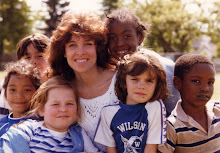I was shocked! Kids who confuse a tomato with a potato, who think an eggplant is a pear, who think a beet is celery. If you haven't seen Jamie Oliver's TED talk and his wish to teach every child about food, take the time!
On the heels of that surprise, this week the following data came across my screen: The number of corporate logos the average America can identify: more than 1000. The average number of native plants or animals that the average American can identify: fewer than 10.
I can't imagine anyone who would think this is good news. The sadder news is that the average adults among us are doing little better than the kids.
Enter a new kind of literacy to our lexicon: food literacy. Philip and June, from Readers to Eaters, offer a simple definition: Food literacy is knowing what we eat and where it comes from. And as their tag line reads: Food literacy from the ground up!
And here is another: Food literacy is the ability to organize one’s everyday nutrition in a self-determined, responsible and enjoyable way.
But learning to identify plants, say just edible plants, is not so challenging! I've spent time with 5th graders at the beautiful environmental learning camp on Bainbridge Island, Islandwood. In just minutes the kids learned to identify and how to pick and break down the leaves of stinging nettles so that the stinging hairs were rendered harmless. Most of them tasted small pieces, and a few picked and ate leaves on every forest walk.
Next came a horticultural walk--some edible plants and some not. Our instructor, Derek, set off on a trail 2 minutes before I released the kids one by one. Each received a laminated card with information about a nearby plant--salal, evergreen huckleberry, licorice fern, salmonberry, big leaf maple, Douglas fir. The first student learned three facts about his plant, and taught it to each successive child who moved on along the path to find his/her card and do the same. After this 30 minute experience, the kids recognized their own plants and some of the others. 30 minutes, on one afternoon.
Time for us all to think more carefully about what we eat and where it comes from!
11.03.2010
Subscribe to:
Post Comments (Atom)




No comments:
Post a Comment